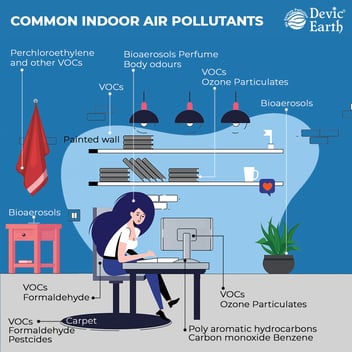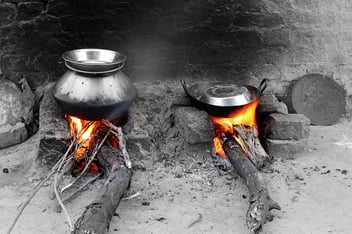The Dangers of Wood Smoke: What You Need to Know
While some may think of it as a harmless and natural substance, the reality is quite different. Each year, about 3,000 people die in residential fires in the U.S. – mainly from smoke inhalation. In fact, scientific research has shown that wood-burning stoves, fireplaces, as well as wildland and agricultural fires can release harmful pollutants, including carcinogenic compounds, that pose a risk to human health.
What is wood smoke?
Wood smoke air pollution is a type of outdoor and indoor air pollution caused by burning wood and other organic matter. It emits a complex mixture of pollutants, including carbon monoxide, nitrogen oxides, volatile organic compounds, and fine particulate matter. The fine particulate matter is the most concerning pollutant, as it is small enough to penetrate deep into the lungs and can cause respiratory and cardiovascular issues.
The composition of emissions can vary depending on the type of wood burned, the age and condition of the wood-burning appliance, and other factors.
Health Effects of Wood Smoke:
- Wood smoke air pollution is a complex mixture of gases and particles, including carbon monoxide, nitrogen oxides, volatile organic compounds, and fine particulate matter.
- Exposure to wood smoke air pollution has been linked to a range of acute and chronic health effects, including respiratory symptoms, cardiovascular disease, and cancer.
- The respiratory effects of wood smoke air pollution can include coughing, wheezing, shortness of breath, and exacerbation of asthma and chronic obstructive pulmonary disease (COPD).
- Wood smoke air pollution can also increase the risk of cardiovascular disease by causing inflammation and oxidative stress, leading to atherosclerosis and an increased risk of heart attack and stroke.
- Long-term exposure to wood smoke air pollution has been associated with an increased risk of lung cancer, as well as other types of cancer, including bladder and breast cancer.
- Children, the elderly, and people with pre-existing health conditions are particularly vulnerable to the health impacts of wood smoke air pollution.
- There is some evidence to suggest that exposure to wood smoke air pollution during pregnancy may increase the risk of adverse birth outcomes, such as low birth weight and preterm birth.
- The health impacts of wood smoke air pollution are not limited to people who live in areas with high levels of pollution. Indoor wood-burning stoves can also contribute to exposure, particularly in rural areas.
What can we do to reduce wood smoke pollution:
- Upgrade to a modern, clean-burning wood stove or fireplace insert that meets the Environmental Protection Agency's (EPA) standards for emissions.
- Maintain and clean your wood-burning appliance regularly to prevent the buildup of creosote, which can cause chimney fires and increase emissions.
- Do not burn trash, plastics, or other materials in your wood-burning appliance. These materials release harmful chemicals and pollutants.
- Use alternative heating sources when possible, such as electric or gas heaters, heat pumps, or solar heating systems.
- Only use your wood-burning appliance when necessary. Avoid using it on days when air quality is poor, or when there is a temperature inversion that can trap pollutants close to the ground.
- Install an air filter or purifier in your home to help remove pollutants from indoor air.
- Practise good ventilation by opening windows and doors or using exhaust fans to improve indoor air quality.
Conclusion:
It's clear that the impact of wood smoke on human health is significant, and it's time we start taking it seriously. The short-term effects of exposure to wood smoke air pollution, such as respiratory symptoms and cardiovascular disease, are just as concerning as the long-term effects, including cancer and adverse birth outcomes.
It's important to remember that indoor air pollution can also contribute to exposure, not just outdoor air pollution. However, with better awareness we can take action to reduce wood smoke pollution by not only upgrading to better appliances but also by installing air purifiers to breathe clean air regularly.
References:
Naeher LP, Brauer M, Lipsett M, Zelikoff JT, Simpson CD, Koenig JQ, Smith KR. Wood smoke health effects: a review. Inhal Toxicol. 2007 Jan;19(1):67-106. doi: 10.1080/08958370600985875. PMID: 17127644.
https://ehs.berkeley.edu/faq/spare-air/what-other-things-can-i-do-reduce-wood-smoke-pollution#:~:text=Replace%20your%20fireplace%20or%20wood,up%20to%2070%25%20less%20PM.
https://www.epa.gov/burnwise/wood-smoke-and-your-health

.svg)
.webp?width=1080&height=1080&name=Free%20Case%20Study%20Steel%20Plant%20(1).webp)






Post Comments